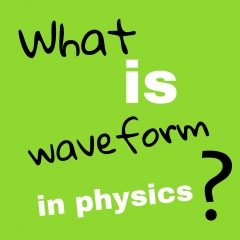hello readers, the total topic covered here – Properties of Ultrasound, Production of Ultrasonic Wave, Magnetostriction Method, magnetostriction effect, magnetoresistance, transducer, magnification, magnetostriction effect in ultrasonics, magnetization

Properties of Ultrasound:
Frequency is greater than 20KHz and highly energetic beam.
Their speed of propagation depends upon their frequency, i.e., increases with increase in frequency. Ultrasound can propagate long distance because of its high frequency
It can travel with constant speed in a homogeneous medium. It cannot travel in a vacuum.
They show negligible diffraction due to their small wavelength. Hence they can be transmitted over long distances without any appreciable loss of energy.
bubbles are formed because of intense ultrasonic radiation’s distributive effect.
Production of Ultrasonic Waves
The Ultrasonic waves cannot be produced by our usual method of a diaphragm loudspeaker fed with alternating current. This is due to the fact that at very high frequencies the inductive effect of the loudspeaker coil is so large that practically no current passes through it. Moreover, the diaphragm of a loudspeaker cannot vibrate at such high frequencies. Hence other methods are used for the production of ultrasonic waves.
There are two important methods namely magneto-striction method and Piezoelectric method which are mostly used nowadays.
1.Magnetostriction Method
Magnetostriction Method is used to produce ultrasonic waves
Magnetostriction Effect:
When an alternating magnetic field is an applied parallel to ferromagnetic rod-like iron, nickel etc. it experiences contraction and expansion at the same frequency as of applied magnetic field. This Effect is known as “Magnetostriction Effect”
– Materials which are used to produce ultrasonic waves are known as Magnetostriction materials.
Construction:
There is a short nickel rod which is clamped at the center. This rod is permanently magnetized in the beginning by passing a direct current in the coil which is wrapped around the rod.
Two ends of the rod are wounded by coils, 1-1 and 1-2 coil. The coil Ll is connected to the collector output of the transistor and the coil 1-2 is connected to the base of the transistor as shown in fig. To the coil 1-1 a variable capacitor Cl is connected in parallel and this forms the tank or resonant circuit.
Working:
– when the battery is switched on, the resonant circuit LICI sets up an alternating current of frequency,
f = 1/2π√LC
As a result, the rod gets magnetized by the collector current, Any change in the collector current brings about a change in the magnetization and consequently a change in the length of the rod. This gives rise to a change in flux in coil 1-2, thereby inducing an emf in the coil 1-2. This varying emf, thereby maintaining the oscillations. By varying capacitor Cl, the frequency of oscillation of the tank circuit gets varied. If the frequency of the tank circuit matches with the natural frequency of the material, then due to the resonance the rod vibrates and produce ultrasonic waves at the ends of the rod. The vibrational frequency of the material of length l, density p and elastic constant E of the rod is
f = 1/2l √E/¶
When the frequency of the circuit becomes equal to the frequency of the rod, resonance occurs and the sound waves of maximum amplitude are generated.
Merits:
– very simple oscillator and production cost is low.
– At low Ultrasonic frequency, large o/p power is possible
– frequency ranging from 100 Hz to 3000KHz can be produced
Demerits:
– can not generate an ultrasonic wave of frequency above 3000 KHz.
– The Frequency of oscillations depends greatly on temperature.
– There will be losses of energy due to hysteresis and eddy current.




![Who is Kamlesh in Sanju movie, sanju book [ Real Kamlesh Sanju’s friend ] kamlesh sanju friend](https://trickyarea.com/wp-content/uploads/2018/06/Screenshot-11-100x70.png)
![What does TCTYL mean, Definition and full form [ read here ] TCTYL MEANING DEFINITION](https://trickyarea.com/wp-content/uploads/2018/07/TCTYL-MEANING-100x70.png)
![Who is Kamlesh in Sanju movie, sanju book [ Real Kamlesh Sanju’s friend ] kamlesh sanju friend](https://trickyarea.com/wp-content/uploads/2018/06/Screenshot-11-218x150.png)
![Kadaikutty Singam actress name Sayyeshaa saigal all detailes[read here] kadaikutty singam actress name](https://trickyarea.com/wp-content/uploads/2018/07/kadaikutty-singam-actress-name-218x150.png)


![Satyameva jayte Dilbar song actress name nora fatehi viral dance,age[ detailed ] dilbar song actress name, details](https://trickyarea.com/wp-content/uploads/2018/07/dilbar-song-actress-neha-fatehi-100x70.png)
![what does sicario mean [ complete article ] Sicario meaning](https://trickyarea.com/wp-content/uploads/2018/06/Sicario-meaning.jpg)
Great site. Plenty of useful information here. I am sending it to a few friends ans also sharing in delicious. And obviously, thanks for your effort!